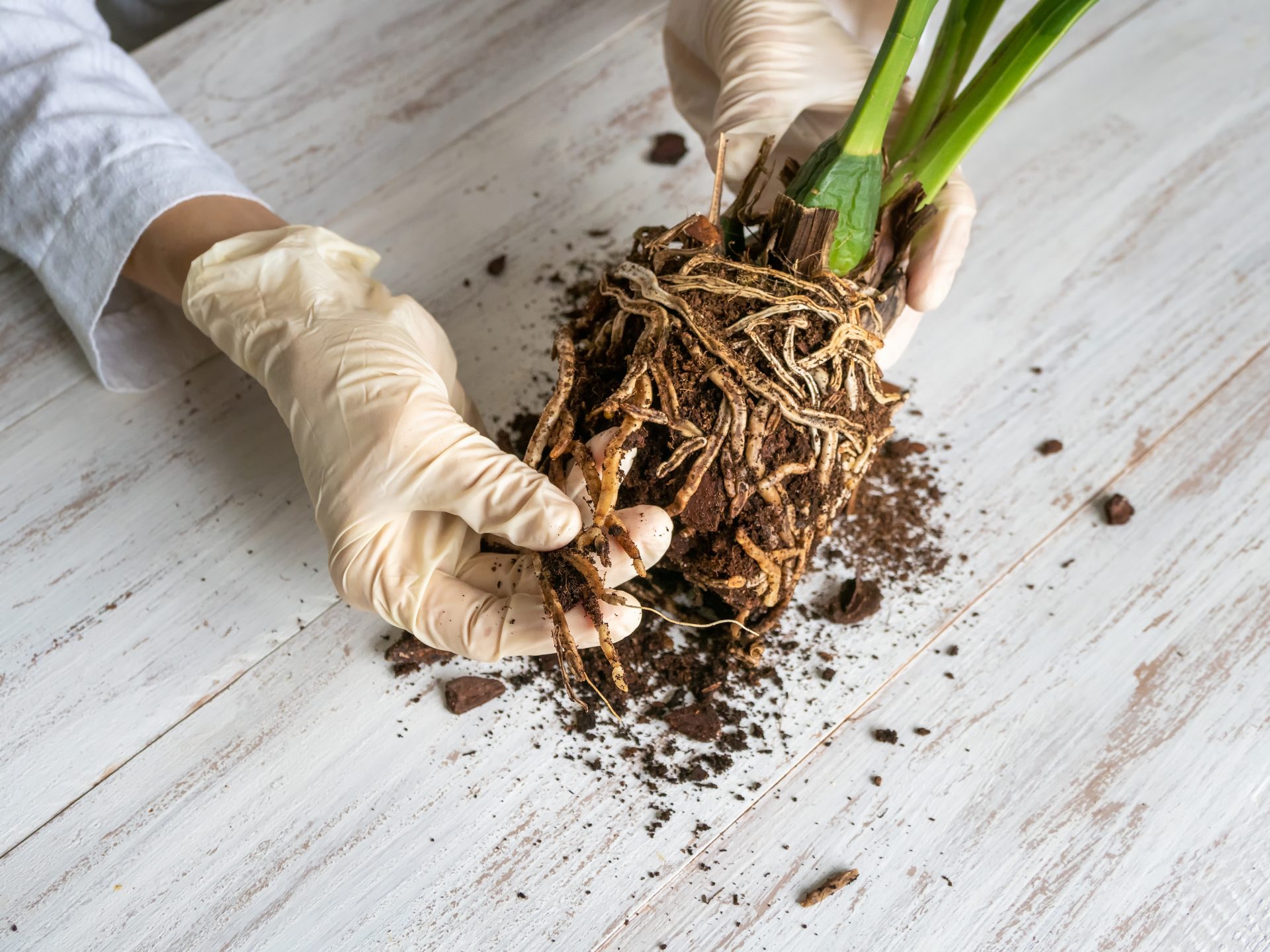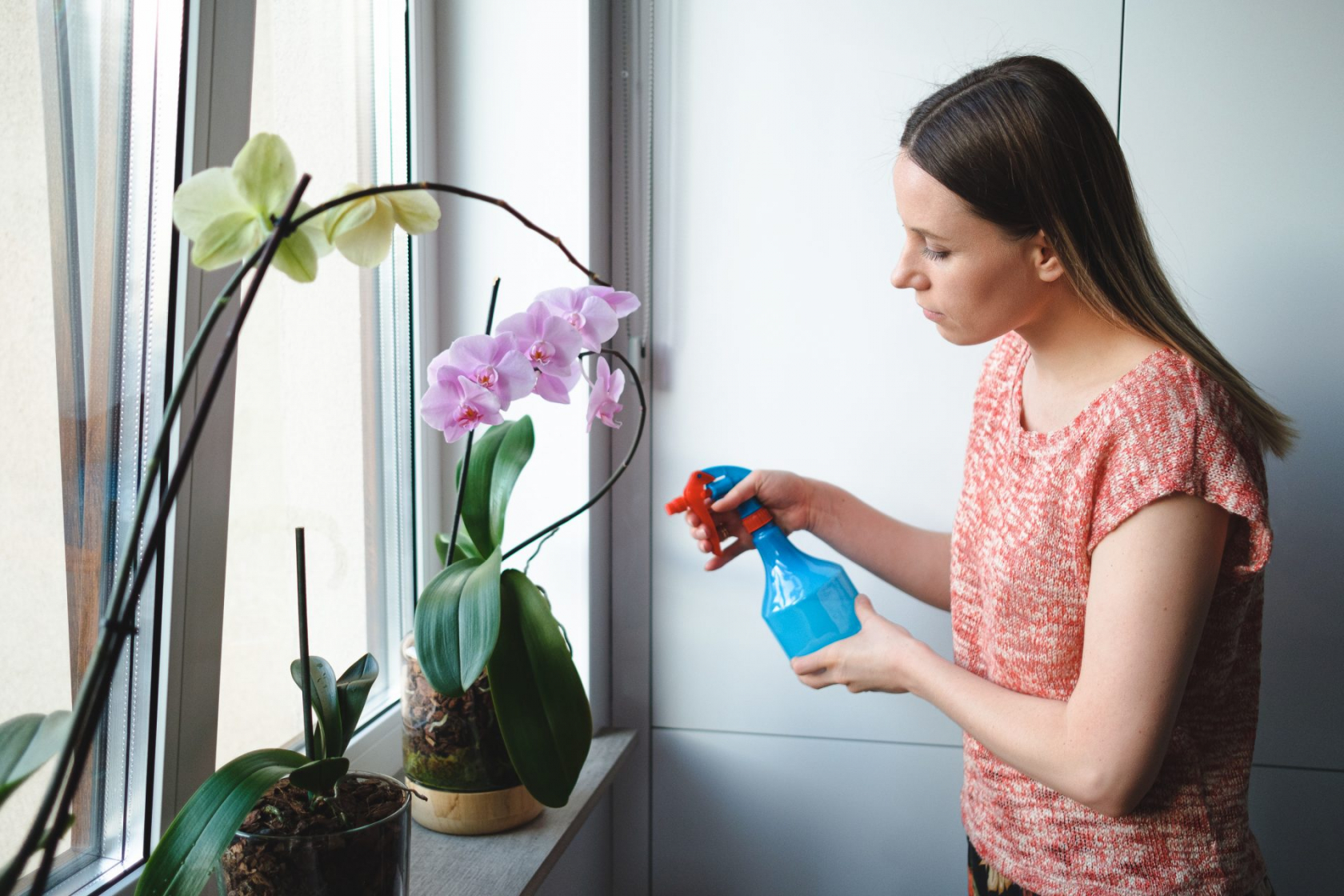Not sure if your orchid plant is dead or dormant? Here’s how to tell, and what (if anything) you can do to revive it.
Orchids are one of those plants that no one really talks about but everyone seems to have owned at one point or another; the kind of item you receive as a gift for your birthday or at Christmas and end up looking after without any clue about what you’re actually doing.
However, unlike a good old cactus or succulent, looking after an orchid requires a reasonable amount of expertise – not only do they need *just* the right amount of water, but they also need a relatively humid environment and the right amount of light to thrive.
They also go dormant between blooming periods to replenish the nutrients they lose during the blooming phase – making it hard to tell whether your plant is dead or just sleeping.
You may also like
How to propagate a spider plant: “My spider plant keeps growing babies – what should I do with them?”
As such, it’s hardly surprising that so many people have found themselves puzzled by an orchid at some time or another. Trust us, if you’ve spent weeks frantically trawling Google to find out what you can do to bring your plant back from the brink, you’re not alone – and that’s where this article comes in.
If you’re dealing with a rather unalive-looking orchid, this guide will help you to decipher whether or not your plant is a complete lost cause or whether it’s just taking a break between blooming phases.
It’ll also give you some top tips on how to bring your plant back from near-death – and give you the info you need to keep your plant healthy in the long run.
How to tell if an orchid is dead
If you’re not sure whether your orchid is dead or dormant, you’ll need to keep an eye out for four key signs.
“Firstly, check its roots,” says Dan Bruce, Leafy’s plant expert. “If the roots are brown and mushy, as opposed to green or white and plump and firm, then this is a sure sign that your orchid has suffered root rot and is beyond saving. Similarly, if the crown connecting the leaves and roots is also brown and mushy then this is also a sign that your orchid has suffered rot.”
Looking at your plant’s leaves is also a good way to check whether or not it’s still alive – but you’ll have to look closely to decipher the difference between dormancy and death.
“Inspect the leaves carefully,” Bruce recommends. “If all the leaves of your orchid turn yellow, all at the same time, this is a sign your plant is dying – however, you must be wary to not mistake this for dormancy.”
You may also like
Yellow leaves: 4 reasons why your plant’s leaves are turning yellow, and how to fix it
He continues: “A plant in its dormant phase will have only one or two yellow leaves, whereas a dying orchid will have yellow leaves all over. Do not despair, though; if your orchid is covered in yellow leaves then this can be resolved with more indirect sunlight and nutrients, especially orchid feed.
“If the leaves on your orchid have dark spots or bleaching then this is a sign of a more serious issue, such as a fungal disease or infestation, which can quickly kill your plant. An orchid suffering with this can be revived; however, you will need to treat carefully with pest control solution, neem oil and ensure the orchid’s environment is just right.”
How to tell if an orchid is dormant
As we’ve already explained, orchids enter a period of dormancy between blooming phases to replenish their nutrients. You can tell the difference between death and dormancy by looking out for two key signs.
“If the leaves at the bottom of your plant are turning yellow then this is not a sign of death, rather a sign of dormancy, as this is the plant discarding older leaves to make way for new leaves,” Bruce explains.
“Similarly, if the flowers fall off after their bloom then this is just a sign of the orchid entering its dormancy phase and getting ready for the next bloom.”
The most common reasons why orchids die
Because orchids like things to be ‘just right’, it’s unfortunately quite easy to kill or damage the health of an orchid if you don’t know what you’re doing.
“One of the most common reasons for killing an orchid is due to the amount of water you give it,” Bruce says. “Overwatering can cause root rot, which is like a death sentence to your orchid, and underwatering can cause leaves to turn yellow and wilt.”
He continues: “Either too much or too little sunlight can also cause your orchid to suffer, as too much bright light can scorch your leaves and too little sunlight will result in fewer blooms.
“Lastly, a colder room, especially with draughts, can also shock your orchid and cause the leaves to drop in shock. Keep your room at a minimum of 15°C and never go higher than 23°C as, you guessed it, a too-warm room can dry out your orchid.”
How to bring a dead orchid back to life
While you can’t technically bring a dead orchid back to life, there are times when a poorly orchid can be nursed back to health. The first step in doing so is to focus on your plant’s watering schedule.
“An orchid requires watering once a week and you should ensure the water is completely drained through before topping it up again,” Bruce says.
You may also like
Plant care: “My peace lily hasn’t got any flowers – how can I get it to bloom?”
“You should then introduce an orchid fertiliser to help boost its nutrients and prune dead blooms and brown roots, as this means the nutrients will just focus on the alive areas and help boost its growth.
He adds: “An orchid also requires indirect sunlight and should never be exposed to temperatures below 15°C, as this can cause your orchid to suffer.”
How to make sure your orchid is healthy
Once you’ve successfully nursed your orchid back to health, you’ll want to make sure it stays nice and healthy.
While establishing a regular watering schedule, upping the humidity around your plant and keeping an eye on its environment are some of the best things you can do, there are a few other steps that can be taken to keep your orchid in top condition.
“Regular fertilising is advisable, especially with an orchid-specific fertiliser,” Bruce explains. “These specific types of fertaliser provide the vital nutrients that are necessary. However, ensure you follow the instructions on the fertiliser carefully, as there is risk of over feeding which can damage the plant and even burn the roots!”
He concludes: Finally, ensure your orchid is not in direct sunlight, as this can dehydrate your orchid, and keep your orchid away from cold draughts. You should also prune dead blooms, to allow for new blooms next season.”
New to plant parenthood? Check out Stylist’s guide to buying, styling and caring for plants to get started.
You can find out more about the most common houseplant problems by checking out our range of plant care content, too.
Images: Getty
Source: Read Full Article



